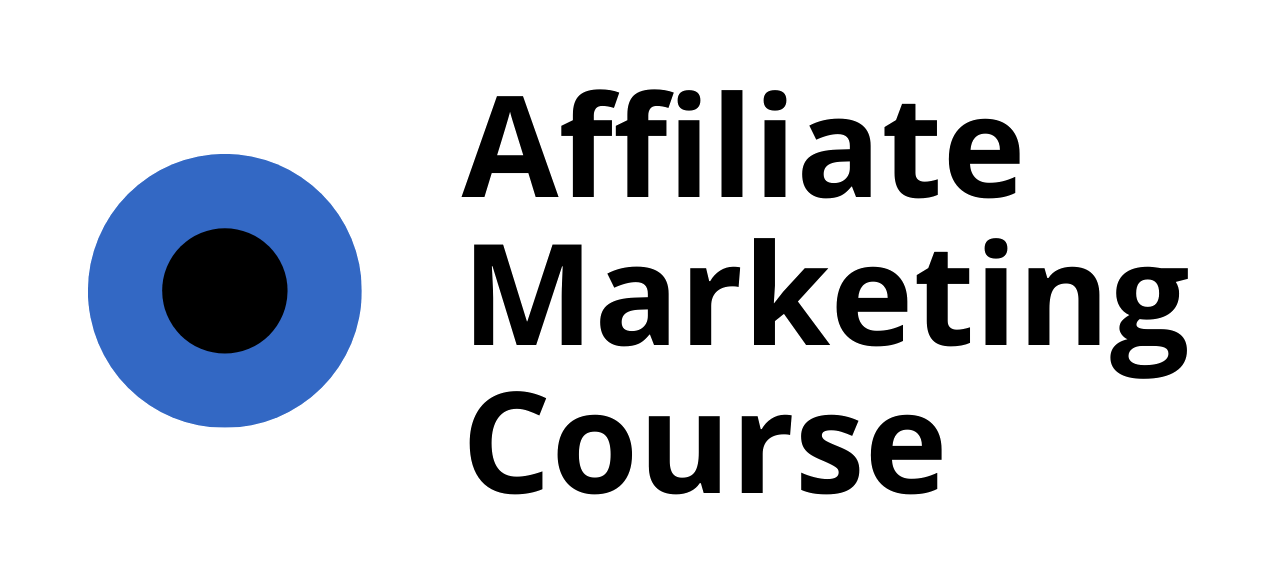In the ever-evolving world of digital marketing, having a well-defined **affiliate marketing roadmap 2024** is crucial for staying ahead in the game. As we step into 2024, the affiliate marketing landscape continues to shift, offering fresh opportunities and challenges. Whether you’re a seasoned marketer or just dipping your toes into this lucrative field, understanding the latest trends, strategies, and tools is essential for maximizing your success. This year, the focus is on leveraging data-driven approaches, exploring niche markets, and adopting innovative technologies to drive results. From optimizing your approach to selecting the right niches, to staying ahead of competitors, this comprehensive guide will walk you through everything you need to know to craft a winning affiliate marketing strategy. Get ready to unlock the full potential of affiliate marketing in 2024 and take your business to new heights.
Key Takeaways
- The affiliate marketing industry is valued at $18.5 billion in 2024, growing at 8-10% annually, driven by sectors like e-commerce, SaaS, Fintech, and Travel, with North America leading the market.
- Affiliate marketing thrives as a performance-based model, enabling precise ROI measurement and cost-effective customer acquisition.
- Publishers and advertisers are leveraging advanced tracking technologies, influencers are monetizing content, and regulatory compliance is enhancing trust in the industry.
- The industry is poised for expansion with digital advertising trends, requiring innovative strategies for sustained growth.
- Leading niches for 2025 include Online Education, Health & Wellness, Sustainable Living, Tech Gadgets, and Fashion & Beauty.
- 80% of affiliate marketers earn between entry-level and advanced income, 15% achieve substantial earnings, and only 1% reach the highest income bracket.

Is Affiliate Marketing Still Profitable in 2024?
Yes, affiliate marketing remains highly profitable in 2024, with continued growth in the industry. Programs and payouts have seen significant expansion, driven by evolving consumer behaviors and advancements in digital marketing strategies. Below are key insights into its profitability and trends:
- Rising Payouts and Programs : Affiliate marketing has experienced a notable increase in payouts, with many programs offering better compensation rates compared to previous years. Platforms like Amazon Associates and ShareASale continue to lead the market, attracting affiliates with attractive commission structures.
- Sponsored Content Dominance : Sponsored content has become a primary driver of affiliate revenue, contributing $8.1 billion in the U.S. alone in 2024, according to eMarketer. This trend highlights the effectiveness of content creators and influencers in promoting affiliate offers effectively.
- Content Creation and Promotion : Affiliates who invest in high-quality content, whether through blogs, YouTube channels, or social media, tend to see greater success. Creating valuable, shareable content helps establish trust and drives organic traffic to affiliate links.
- Social Media and Email Marketing : Platforms like Instagram, TikTok, and email lists remain powerful tools for affiliate marketers. Leveraging these channels allows affiliates to reach targeted audiences more efficiently, increasing conversion rates.
- SEO and Keyword Research : Optimizing content for search engines ensures long-term visibility and sustained traffic. Tools like Google Keyword Planner and SEMrush help affiliates identify high-demand keywords, making their content more discoverable.
- Compliance and Trust : Adhering to regulations like FTC guidelines is crucial. Building trust with audiences ensures that affiliate promotions are well-received, fostering long-term relationships between affiliates and consumers.
- Scaling Efforts : Successful affiliates continuously test and optimize their strategies. From experimenting with niche markets to refining landing pages, ongoing effort is essential for sustained growth.
Affiliate marketing continues to be a lucrative opportunity, particularly for those willing to adapt to changing trends and leverage effective strategies. By focusing on content quality, audience engagement, and compliance, affiliates can maximize their profitability in 2024 and beyond.
What is the Scope of Affiliate Marketing in 2024?
Affiliate marketing continues to evolve rapidly, offering diverse opportunities for businesses and marketers in 2024. The scope of affiliate marketing has expanded significantly, driven by changing consumer behaviors, technological advancements, and the rise of digital platforms. Below is an overview of the current landscape and its implications for stakeholders.
Key Trends in Affiliate Marketing for 2024
- Interactive Content Dominance :
Interactive content such as quizzes, polls, and augmented reality experiences is gaining traction. Affiliates who leverage these formats can engage audiences more effectively, leading to higher conversion rates. Platforms like AffiliateMarketingCourse.biz highlight the importance of creating immersive experiences to capture attention and drive sales. - Video Marketing Integration :
Video content remains a dominant force in marketing. Affiliates are increasingly incorporating video ads, product demos, and testimonials into their campaigns. This trend aligns with consumer preferences for visual and fast-paced content, making video a cornerstone of modern affiliate strategies. - Influencer Partnerships :
Collaborations between influencers and affiliates continue to thrive. Influencers provide authenticity and reach, while affiliates benefit from their trusted relationships with audiences. Successful partnerships often involve co-branded content and sponsored posts, as seen on platforms like Shopify and ClickBank . - Niche Targeting :
The ability to target specific niches has become more sophisticated. Affiliates can now use advanced analytics tools to identify and cater to the interests of highly targeted audiences, maximizing ROI. This precision is particularly evident in industries like health, wellness, and technology.
Examples of Affiliate Marketing Campaigns in 2024
- E-commerce : Retailers like Amazon Associates and eBay Partner Program continue to dominate the space, leveraging affiliate programs to drive sales during peak shopping seasons.
- Subscription Services : Companies like Etsy and Patreon are increasingly relying on affiliate marketing to acquire new subscribers.
- Education and Courses : Platforms like AffiliateMarketingCourse.biz are capitalizing on the demand for remote learning by offering affiliate programs to promote their courses.
Competitive Landscape
The affiliate marketing space is competitive, with major players like Google AdSense , Facebook Audience Network , and Commission Junction leading the charge. However, smaller, niche-focused programs are also thriving by offering tailored solutions to specific industries.
Future Outlook
As technology continues to advance, affiliate marketing will likely see further innovations, such as AI-driven targeting and shoppable content. Marketers who adapt to these changes will be better positioned to succeed in this dynamic field.
By understanding these trends and leveraging effective strategies, businesses can harness the power of affiliate marketing to achieve their growth objectives in 2024 and beyond.

Is Affiliate Marketing Still Worth It in 2025?
Yes, affiliate marketing remains a valuable and effective strategy in 2025. Despite the evolution of digital marketing, affiliate programs continue to offer significant benefits for both businesses and affiliates. Here’s why it’s still worth exploring:
- Cost-Effective : Affiliate marketing operates on a performance-based model, meaning businesses only pay for results. This makes it a budget-friendly option compared to traditional advertising methods.
- Content Marketing Synergy : Affiliate marketing aligns well with content marketing strategies. Creating valuable content around products or services can drive organic traffic and establish authority, making it a complementary approach.
- Social Media Influence : With the rise of social media platforms, influencers can effectively leverage affiliate links to engage their audience, reaching a broader demographic.
- Technological Advancements : Sophisticated tracking tools allow for precise measurement of campaign performance, fostering transparency and trust between brands and affiliates.
- Niche Opportunities : While large brands dominate the space, niche markets present opportunities for affiliates to stand out, particularly through specialized content and targeted strategies.
- Global Reach : Affiliate networks connect affiliates with global brands, expanding reach beyond local markets and tapping into diverse customer bases.
- Adaptability : Affiliate marketing adapts to changing consumer behaviors and technological trends, making it a flexible strategy for staying competitive.
- Trust Building : As digital marketing becomes increasingly complex, consumers trust recommendations from trusted sources, making affiliate partnerships a reliable channel for building credibility.
While challenges exist, such as the need for continuous learning and adaptation to stay ahead of competitors, affiliate marketing’s potential rewards make it a worthwhile investment for both parties involved. By leveraging the right strategies and tools, businesses can maximize their affiliate programs’ success in 2025 and beyond.

How Big is the Affiliate Marketing Industry in 2024?
As of 2024, the affiliate marketing industry has shown consistent growth, with its market size reaching approximately $18.5 billion globally. This growth reflects the increasing reliance of businesses on performance-based marketing strategies to drive sales and brand awareness.
Key Statistics and Insights:
- Global Revenue : The affiliate marketing industry generated over $18.5 billion in 2024, marking a steady increase from previous years due to the rise of digital commerce and content consumption.
- Growth Rate : The sector has experienced a compound annual growth rate (CAGR) of around 8-10% over the past five years, driven by advancements in technology and changing consumer behaviors.
- Major Growth Drivers :
- E-commerce : Affiliate marketing remains a critical tool for retailers and brands to leverage customer purchases, particularly in the fast-growing e-commerce sector.
- SaaS (Software as a Service) : Companies offering subscription-based services increasingly rely on affiliate programs to acquire new customers cost-effectively.
- Fintech and Travel : niches like financial services and travel have seen significant growth in affiliate marketing due to high transaction values and repeat purchase potential.
- Regional Breakdown :
- North America continues to dominate the market, accounting for over 60% of global affiliate spending, followed by Europe and Asia-Pacific.
Why Affiliate Marketing is Thriving:
The affiliate marketing model aligns perfectly with the shift toward performance-based marketing in today’s competitive landscape. Businesses can now measure ROI more precisely, making affiliate programs a cost-effective and flexible strategy for customer acquisition.
Industry Trends:
- Program Complexity : Affiliates are increasingly leveraging advanced tracking technologies and analytics tools to maximize ROI for both publishers and advertisers.
- Content Monetization : Bloggers, influencers, and content creators are turning to affiliate marketing as a viable revenue stream, contributing to the overall growth of the industry.
- Regulatory Compliance : As the industry matures, stricter regulations are being implemented to protect both affiliates and advertisers, fostering trust and transparency.
Future Outlook:
With the continued rise of digital advertising spend and the evolution of consumer preferences, the affiliate marketing industry is poised for further expansion. Brands that adopt innovative strategies and partner with the right affiliates will likely see the greatest benefits.
By understanding these dynamics, businesses can better position themselves to capitalize on the affiliate marketing opportunity and achieve long-term growth in this dynamic landscape.
Best Niche for Affiliate Marketing in 2025
Affiliate marketing continues to evolve, offering diverse opportunities across various industries. As we move into 2025, certain niches are poised to dominate due to emerging trends, technological advancements, and changing consumer behaviors. Here’s our breakdown of the most promising niches for affiliate marketers in the coming year:
- Online Education : With the rise of remote work and digital nomad culture, online education has become a cornerstone of modern learning. Platforms like AffiliateMarketingCourse.biz are leading the charge, offering comprehensive courses and certifications. This niche is perfect for promoting educational tools, webinars, and online course memberships.
- Health and Wellness : Mental health, fitness, and holistic living are becoming increasingly popular. Affiliate marketers can thrive by promoting apps, meditation tools, fitness programs, and wellness retreats. Brands like MindBodyApp are revolutionizing the industry with innovative solutions.
- Sustainable Living : Consumers are prioritizing eco-friendly products and services. Affiliate marketers can tap into this trend by promoting reusable goods, organic skincare, and sustainable fashion. Companies like EcoFriendlyProducts are leading the way with ethically sourced and biodegradable products.
- Tech Gadgets : Smart home devices, wearable technology, and AI-driven tools continue to captivate audiences. Promoting the latest gadgets from brands like SmartGadgetsStore allows affiliates to target tech enthusiasts and early adopters.
- Fashion and Beauty : Personalized beauty products and sustainable fashion are gaining traction. Affiliate marketers can partner with brands like PersonalizedBeautyBox to offer curated beauty kits and eco-conscious clothing lines.
Each of these niches offers unique opportunities for affiliate marketers to leverage trending products and services. By staying ahead of consumer preferences and aligning with emerging brands, affiliates can maximize their earning potential in 2025 and beyond.

What Percent of Affiliate Marketers Succeed?
About 80% of affiliate marketers fall into the beginning to advanced income range, with annual earnings ranging from $0 to $80,000. 15% of affiliate marketers earn between $80,001 and $1 million or more annually. Interestingly, only 1% of affiliate marketers achieve a monthly income of six to seven figures.
While these statistics may seem overwhelming, it’s important to note that success in affiliate marketing varies greatly depending on factors like effort, strategy, and niche selection. Many marketers start small and gradually build their income over time.
For more insights into affiliate marketing statistics and strategies, visit our resource page: Affiliate Marketing Course .
Key Takeaways:
- 80% of affiliate marketers are in the entry-level to advanced stages of income generation.
- 15% of affiliate marketers achieve significant earnings between $80,001 and $1 million annually.
- Only 1% of affiliate marketers reach the highest income bracket, earning six to seven figures monthly.




0 Comments